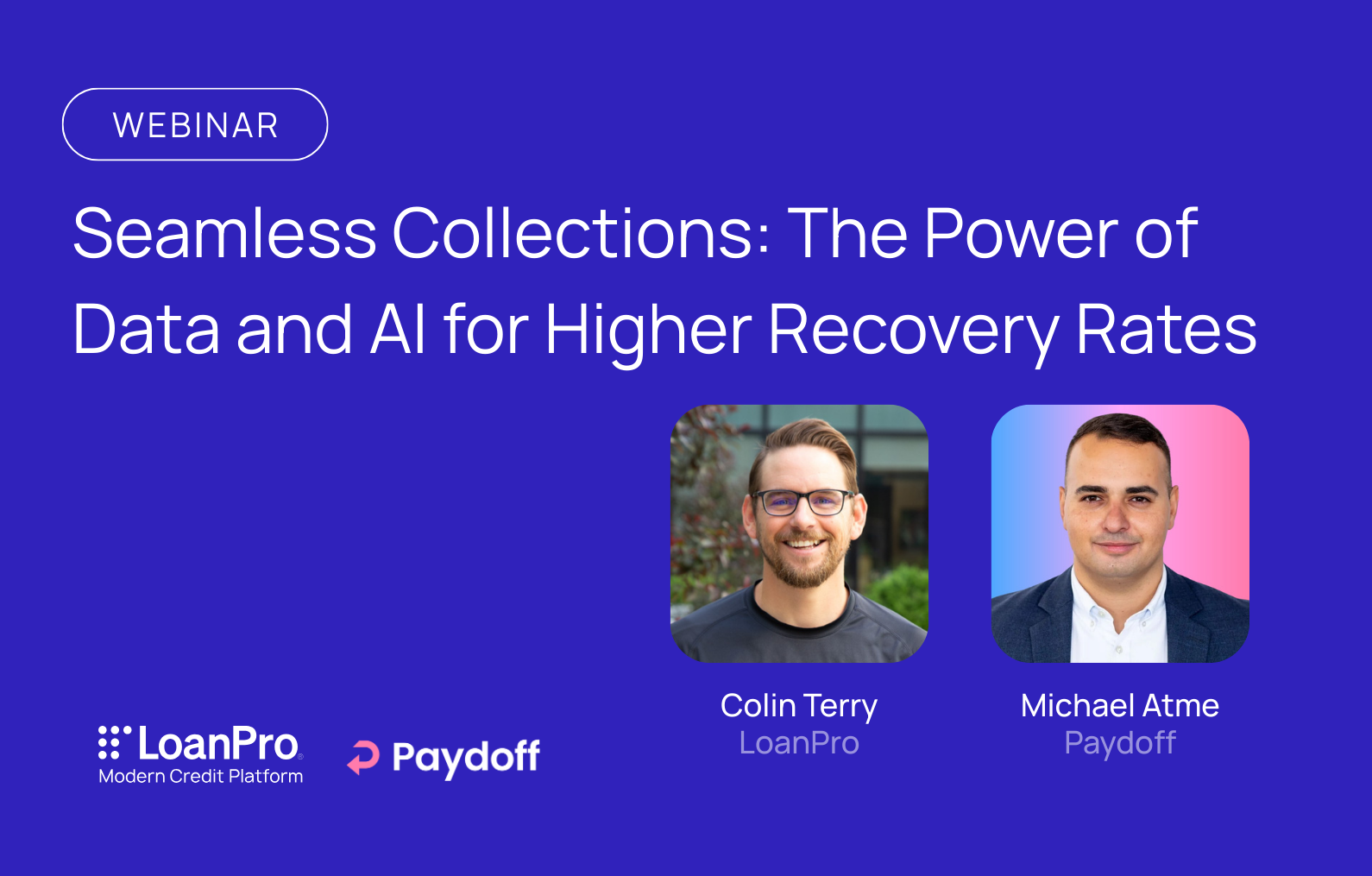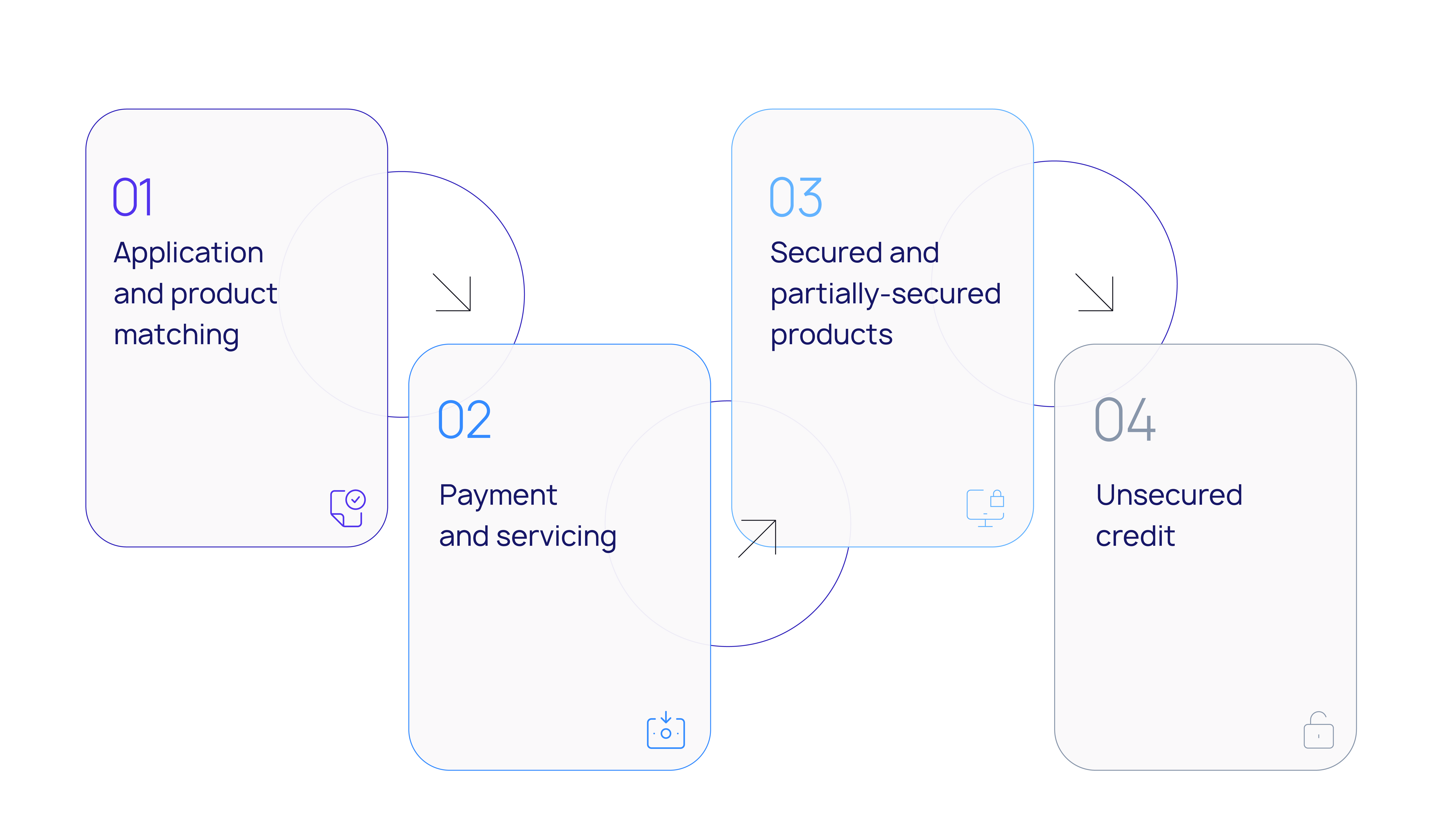From auto lot to silicon slopes
Any kind of financing can be tricky, but automotive lending is its own beast.
Between the logistical challenges of managing or coordinating with auto lots, the difficulty of tracking and sometimes recovering collateral, and the web of state and local regulations, automotive lenders and lessors have a lot to handle—and that’s on top of problems that are universal to any credit provider, like driving portfolio growth, keeping borrowers engaged, and staying efficient.
Almost twenty years ago, brothers Rhett, Ben, and Lloyd Roberts were facing these issues head-on at their auto lot. Their experience with mediocre lending platforms is what inspired them to create something better: LoanPro. And while LoanPro’s platform can launch and support virtually any class of credit product, those auto lending roots run deep, and LoanPro continues to build tools and features that make automotive lending easier and more profitable.
This article will go over a bit of that history, talking not just about what LoanPro learned then, but everything we’ve done since.
Firsthand experience with automotive lending
As they managed a dealership, the Roberts brothers saw for themselves how difficult it was to manage their business out of the legacy auto lending systems that were available. They had started doing in-house financing as a way to stabilize revenue, spreading out profits year-round instead of just the Christmas and tax-return spikes when most shoppers spring for a new car. Borrowers like the convenience of lending from them as well, and soon their lending operation had outgrown the limits of spreadsheets and sticky notes.
They shopped for software, and while many of the legacy solutions would be an improvement over nothing, it seemed like none of them would enable their ultimate goals of scaling up their portfolio and cutting down on their manual work. Calculations were unreliable, and even minor edits to an account were next to impossible. They needed a better system, and began to take stock of their options.
The build vs. buy dilemma
The Roberts brothers were faced with the decision to either settle for a system that couldn’t take them where they wanted to be, or hire on developers and build a system of their own. This problem wasn’t unique to them, either. Countless credit providers have debated whether to build their own platform or buy an existing one.
Ironically, we now find ourselves cautioning many lenders about building their own systems. Software development is an entirely different industry, and without the expertise and vision to guide the project, you can spend years building but end up with nothing to show for it. If an option like LoanPro had been around back then, they almost certainly would have gone with it. But limited to the options that actually existed, they decided to build a better system themselves.
They hired developers and began building a system that could handle the problems they were seeing every day, from calculating amortization schedules to printing contracts and disclosure documents to tracking collateral and managing accounts and borrowers. It took a significant investment of time and money, with the Roberts brothers occasionally forgoing their own paychecks from month-to-month so they could keep their dealership and developers working full speed ahead.
Eventually, it paid off. They called their new system AutoPal, and set it to work streamlining their dealership and lending operations.
From in-house system to SaaS provider
Fast forward a few years. and we see the Roberts brothers not just scraping by, but thriving. At industry events, other lenders began to notice that the Roberts’ brothers were doing particularly well, and the brothers attributed their success to their new in-house platform. What surprised them was that other automotive lenders didn’t just want to follow in their footsteps and create their own system—they wanted to license AutoPal.
These lenders were facing the same build-versus-buy dilemma, but now there was a new option available, a platform that could modernize their operations and provide tangible benefits through streamlining and automating their processes. Without any sales pitch or marketing campaigns, these lenders had been sold on the system before the Roberts brothers even considered licensing their software to other companies.
The brothers strategized deliberating, weighing the possible benefits against the risk of other lenders getting their ‘secret sauce’. But eventually, they all saw that this wasn’t just an opportunity to introduce a new revenue stream into their business. It was a chance to improve the lending and credit industry. Rather than focusing solely on automotive lending, they expanded their horizons to other types of financing. AutoPal soon became LoanPro, and before long, hundreds of credit providers were using it to drive growth, mitigate risk, and delight their customers.
Enduring insights
This history isn’t just how LoanPro got here; it fundamentally shaped our understanding of the industry’s challenges and continues to give us insights that will overcome them. Rhett Roberts, still our CEO, put it this way:
“As lenders ourselves, we became frustrated with the inability to find a platform that allowed flexibility and configuration to empower innovation and growth. The next wave of financial innovation requires a modernization of our infrastructure, and we’re excited to be the platform to unlock this innovation.”
LoanPro wasn’t just built to solve the problems we were facing in the early 2000s. It was built to face the challenges that credit providers face today, whenever today might be. The systems we today call “legacy platforms” were once the cutting edge in modern financial technology. It’s not that the product is fundamentally flawed, but that their design doesn’t support ongoing updates and improvements to keep up with changes in the market. And in one of the most rapidly-evolving markets in the world, that’s really bad.
That’s why LoanPro continues to focus on innovation, creating first-of-their-kind technologies like transaction level credit™ that open up new avenues for personalization. We’ve built LoanPro to be scalable, efficient, and powerful, but most importantly, we’ve built it to be upgradeable, and we’ve built a company with the insight and dedication to make sure LoanPro never becomes like the stagnant, outdated legacy solutions that we saw when we first started lending.
Upgrade your auto lending
Whether you’re looking to upgrade from spreadsheets and sticky notes, struggling with your current platform, or just curious about how other providers are growing their portfolios and margins, reach out to us. We understand the unique challenges that automotive lenders face, and we’ve seen firsthand how to overcome them. We’d love to learn more about the successes and struggles you’re seen, and talk about how LoanPro’s automotive lending and credit platform can drive your business forward.





